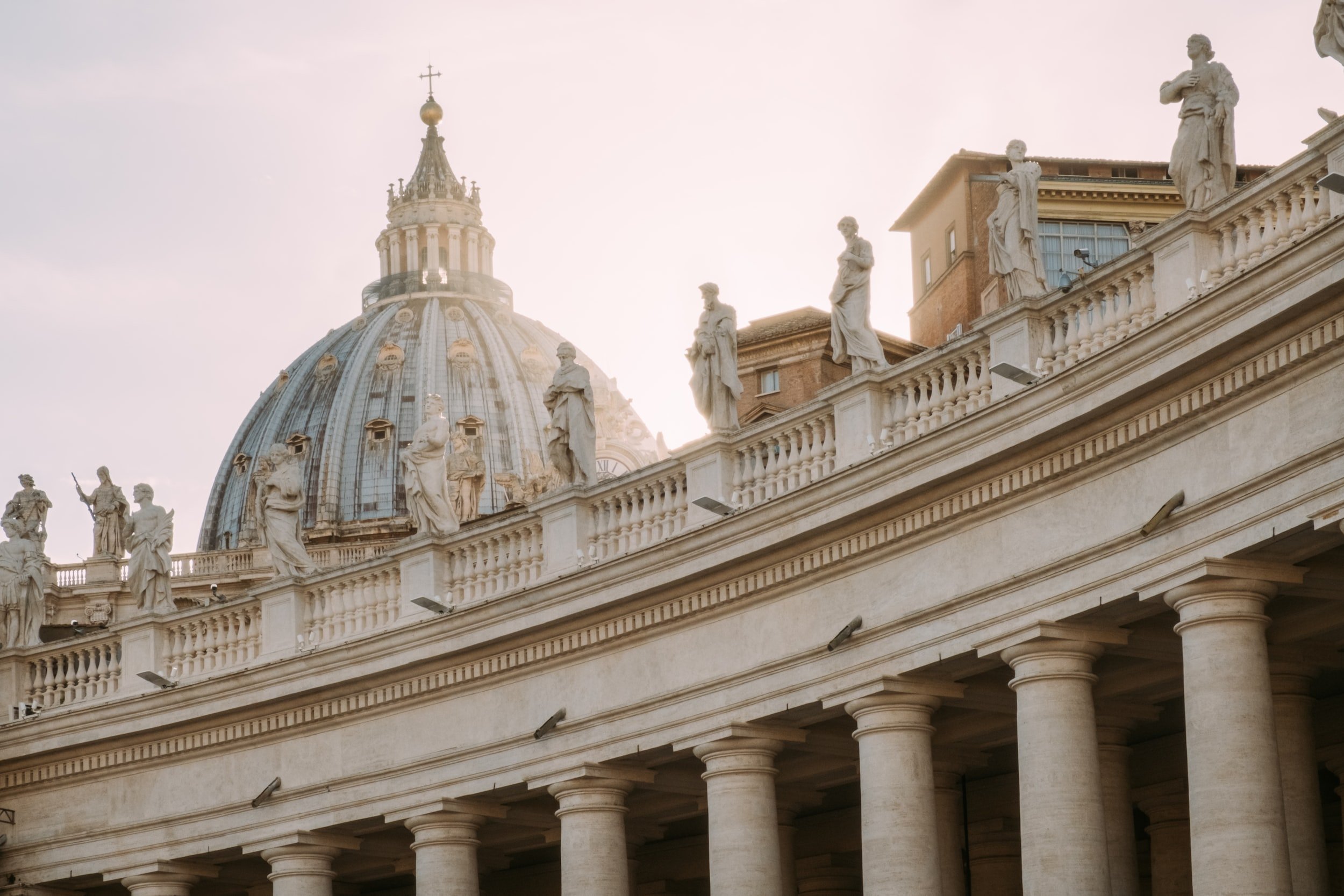We Are Not Alone This Lent
Photo by Simone Savoldi on Unsplash
This post was orginally published on Amar D. Peterman’s Substack, “This Common Life.”
The streets of southern Italy have come to my mind often these past few months. While I will always long for smooth gelato and Italian espresso, what I have continued to reflect on for several years now are the grandiose cathedrals whose stained-glass windows and ancient stone have watched over the city for centuries.
If I close my eyes, I can picture Saint Peter’s Square in the Vatican City with statues of hundreds of saints looking down, seemingly, from the heavens. I remember walking through the narrow streets of Rome, looking at every cathedral I could find. Despite my inability to understand the Latin and Italian inscriptions, the very walls of the church preached the Gospel over me without a single word. As my eyes faced the apse, I saw statues of saints surrounding me. The walls drew my eyes upwards towards endless windows that depicted stories from scripture as the bright sun broke through the painted glass.
Yet, even in this magnificent display of God’s greatness and “otherness,” the priest offered the elements of Christ’s body and blood during the Mass. Surrounded by visual reminders of God’s transcendence, Jesus Christ is present – able to be felt, tasted, and made a part of us.
The book of Hebrews speaks often about this. The author writes in chapter twelve:
1 Therefore, since we are surrounded by so great a cloud of witnesses, let us also lay aside every weight, and sin which clings so closely, and let us run with endurance the race that is set before us, 2 looking to Jesus, the founder and perfecter of our faith, who for the joy that was set before him endured the cross, despising the shame, and is seated at the right hand of the throne of God. (12:1-2)
This cloud of witnesses includes the saints of old—those who have run the race before us in faith that God will continue to work in our world today. In Hebrews 11, the author recounts the leaders of our faith through the Old Testament: Abel, Enoch, Noah, Abraham, Isaac, Jacob, Moses, Rahab, Gideon, Samson, David, Samuel, and the prophets. The list continues on and on.
These all died in faith, not having received the things promised, but having seen them and greeted them from afar, and having acknowledged that they were strangers and exiles on the earth. (11:13)
For believers today, this great cloud of witnesses surely includes the saints of the Scriptures, but it also includes the saints of our recent past. Indeed, Paul refers to those in Christ as fellow saints, as holy ones who have been set apart by Christ (Romans 1:7). These include the saints deemed chattel who labored on the plantation, who suffered under exclusion and racism, who fought for the abolition of slavery, who were martyred for pursuing justice – they all stand as a cloud of witnesses around us as we continue in their work.
These saints continue their work today as they continue to witness to Christ who, as Howard Thurman writes, offered us a way to not only survive but flourish under the weight of the empire.
Since then we have a great high priest who has passed through the heavens, Jesus, the Son of God, let us hold fast our confession. For we do not have a high priest who is unable to sympathize with our weaknesses, but one who in every respect has been tempted as we are, yet without sin. Let us then with confidence draw near to the throne of grace, that we may receive mercy and find grace to help in time of need. (4:14-16)
As we are surrounded by a great cloud of witnesses, our ultimate encouragement is that we are united with a God who has suffered as we have. In fact, Scripture repeatedly points to suffering as our means of being made in the image of Christ.
In Hebrews, the author continues:
“In the days of his flesh, Jesus offered up prayers and supplications, with loud cries and tears…Although he was a son, he learned obedience through what he suffered. And being made perfect, he became the source of eternal salvation to all who obey him” (5: 7-9).
James also encourages his reader to “consider it all joy when we encounter trials,” because “the testing of your faith produces endurance,” which, when complete, makes us “perfect and complete, lacking in nothing” (James 1). Peter also, in his first epistle, likens our faith under the weight of suffering and trial to precious metals being refined by fire (1 Peter 1).
This Lenten season, we may find joy even in lament because we are not alone. The path of lent is one well-known by Jesus and the saints who have gone before us. It attunes us to a reality marked by death and a hope for future resurrection.


